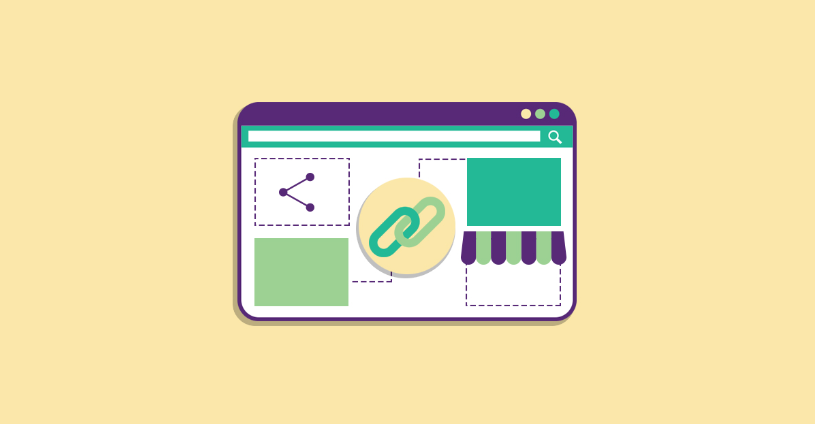Effective E-Commerce SEO Strategies and Techniques in 2023
In this digital age, e-commerce has become relevant more than ever. Online shopping is now part of the everyday lives of millions of people, thus it constantly advances to meet the demands and needs of the market. These results in e-commerce businesses exploring ways to stay afloat and thrive in the industry, and one way they can do that is by using effective e-commerce SEO or search engine optimization strategies.
SEO refers to a series of techniques used to make websites become the top results page on search engines like Google. Hence, e-commerce SEO is the strategy used to make e-commerce websites become part of the top search results page. Compared to the past, the SEO strategies in today’s landscape have evolved predominantly. Currently, 39% of the traffic on e-commerce sites is from online searches (Maff, 2023). This means that e-commerce SEO is very significant in today’s businesses because it could drive more sales and lead to the company’s overall success.
This article will discuss different E-commerce strategies and techniques that are still relevant and effective in 2023.
E-commerce SEO Strategies and Techniques in 2023
A. On-Page SEO Optimization

The first technique in this list is called on-page search engine optimization also known as on-site SEO. This technique refers to the process of customizing specific areas of your websites to make them part of the top rankings on search engines thus getting more traffic. These parts include the on-page content, internal links, title tags, and many more.
This strategy entails that you will optimize your product pages for target keywords so that users who search using specific keywords will be redirected to your site. You must create content that uses the target keywords so that your page will display higher on the search.
Another e-commerce SEO technique entrepreneurs can perform is making compelling meta titles and descriptions for their products. Your title should be comprehensive and perfectly describes your product, service, or content. It should use relevant keywords that will catch the attention of users. Furthermore, the description should be consistent with your meta-title and must leverage the specific phrases and terms that your target consumers are searching for. Lastly, you must employ structured data markup that will lead to rich snippets and enhanced search results. This refers to your product data’s machine-readable representation that can be used to share the data with Google Merchant Center. This markup helps search engines to better process and understand your content. Hence, resulting in better e-commerce SEO search results ranking.
B. Technical SEO for E-commerce

The second on this list of e-commerce tips is the Technical SEO for e-commerce. This involves the technical parts of your website such as site structure and navigation, canonicalization, and URL structure best practices, implementing HTTPS, secure connections, and SSL certificates. First, site structure and navigation optimization refer to the look of your site when it comes to how things are placed. Your page should be optimized for the best viewing and navigation experience for your customers. Its parts and sections should be user-friendly and easily accessible to not confuse your potential customers. This strategy helps your site rank higher on the results page.
Next is Canonicalization which means selecting the representative URL of a piece of content. It is what search engines use to determine what URL is the most representative of your website or page. Your URL should be simple, straight to the point, and best describe your content or product so that users will be enticed to click on it. Lastly, this e-commerce SEO tip is implementing HTTPS, secure connections, and SSL certificates. This means that you must secure an SSL certificate from a service provider like Let’s Encrypt. With this strategy, your websites will look more legitimate to your customers and make them feel safe. It makes search engines know that your site quality is safe for visitors so it will recommend it higher on the search results.
C. E-commerce Content Strategy

One of the most important e-commerce SEO strategies is having quality content. Your page should include high-quality product descriptions as it will not only inform consumers about your product effectively but it will make searches get redirected to your page because it perfectly describes what they are searching about. Your product description must be simple yet comprehensive to make all kinds of users understand it easily and still get all the information they need to know more about your product.
Another content strategy is to integrate user-generated content and reviews to make your products appear good and more legitimate to your consumers. These reviews are from real people who used your product so other people will be enticed to purchase your product as well if the reviews you integrate positively talk about what you are selling. Lastly, e-commerce SEO content strategy includes crafting informative and engaging blog posts that will educate your consumers about your product. They will get to learn both the technical information and fun facts about your product. With engaging blog posts, they can interact with your product by watching videos or gamifying your content.
D. Image and Video SEO

The fourth tip in this list of e-commerce strategies refers to the use of images and videos for search engine optimization. You must use product images that are high-definition or high-quality to make them look better on search engines. You must do professional product shoots or use high-quality cameras and other equipment to capture the excellent quality of your product or service. They must have alternative texts, file names, and image sitemaps because they help in making your images become the top image results in search engines. Your alternative texts and file names must appropriately describe the image. It should give specific details of what is included in the image and must consist of the words that will most likely be used by potential customers when searching for products like yours.
Most importantly, to make your product images stand out, you should use different image editing services to get them optimized or make use of tools to easily remove bg from your images. You can also enhance the quality of your photos and make them more interesting for searchers.
As for video optimization, you can utilize videos that are relevant to your content to make users more engaged and your content to be more visible in search results. Videos are interactive in nature and can make users invested in your content and product offerings.
E. Mobile SEO and E-commerce

Many people use their mobile devices to search for something, hence it is important for your e-commerce site to be optimized for mobile users. This strategy includes mobile-first indexing which refers to search engines like Google using the mobile version of your site for indexing and ranking. Your site should still be user-friendly and can easily be navigated even after being switched to mobile view. This ecommerce SEO tip involves the responsive design and mobile usability of your site which mainly benefits mobile users who use their devices to search for ecommerce products and services. You should keep them in mind by having a good mobile user interface and mobile design usability.
F. Local SEO for E-commerce

Local SEO for E-commerce refers to strategies that are optimized for local searches and “near me” queries of searchers. This is an integral part of e-commerce SEO strategies as it targets customers in specific areas, regions, cities, and even neighborhoods. If you have target consumers in specific places, local SEO will be very beneficial to your e-commerce business. Local SEO is where you focus on improving your visibility and ranking in local search results. You can employ this among other ecommerce strategies by crafting local content that is relevant to local searchers. In addition, you can use Google My Business and local directories to improve your ranking on search results. You can create a profile on Google My Business with no cost and can manage your e-commerce business from Google Search and Maps to reach more customers. Lastly, you can leverage customer reviews and local citations to improve the legitimacy and credibility of your products. You can utilize local opinion leaders and their positive content about your product to entice more local customers to purchase your product or service.
G. Backlink Building and E-commerce

The second to the last e-commerce SEO tip refers to Backlink Building and E-commerce like earning authoritative backlinks through content marketing. Backlinks refer to links on websites other than your own that redirect back to a page on your website. In other words, your website link is placed on other websites or content. Backlinks can help you rank higher in search engines depending on their quality and quantity. You can use this strategy by getting authoritative backlinks through content marketing or by redirecting an expired domain. It is when your website link is included in quality content that is not posted on your website but on a site with established readers or visitors.
Another strategy is utilizing the reach of influencers and collaborations. You can partner up with different social media influencers, vloggers, and even other brands to make your e-commerce website known to your market. You can utilize the clout or organic reach of influencers by getting them to make positive and quality content about your product that will drive their followers to your website or page links. Lastly, it is important that you also monitor and disavow low-quality or harmful backlinks that may ruin the image of your website or products. You must not have your links included on dangerous or illegitimate sites and content. You must monitor that all your backlinks come from proper channels to ensure that your customers are credible as well and will have a better impression of your company.
H. E-commerce SEO Analytics and Measurement

The last of the eight e-commerce tips is utilizing SEO Analytics and Measurements. With every strategy used, you must evaluate your results to know which areas you should improve, what practices you should stop or continue doing, and more. You must consistently track organic traffic, conversions, and rankings. By doing this you will get a better idea of where your customers are coming from, what keywords they use when searching, what are their demographics, how high are you on the rankings, and more. This will allow you to further improve your e-commerce strategies and better your techniques next time.
You can use Google Analytics and Search Console to gather insights. These are accessible and reliable tools to measure the performance of your executed e-commerce strategies. Lastly, continuous optimization based on data analysis hugely helps your e-commerce SEO strategies as you will only get to advance your techniques every time you execute them. The constant improvement of your e-commerce strategies will ensure that you get better results in the future which will drive sales and growth to your e-commerce website or pages.
Conclusion

Utilizing these e-commerce tips will ensure that your e-commerce website will perform better on top search results on search engines. Hence, you must continue to adapt to the evolving landscape of search engine algorithms. You must be knowledgeable about the current updates and trends and use them to your advantage. Furthermore, you must implement a holistic and data-driven approach to e-commerce SEO in 2023 for the overall success of your e-commerce business.



